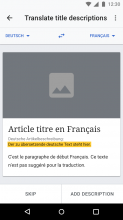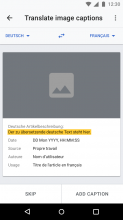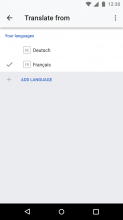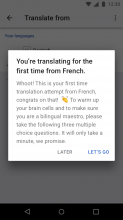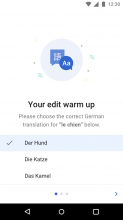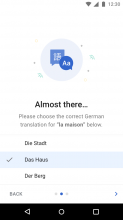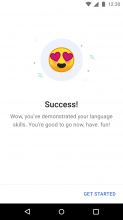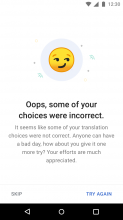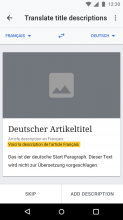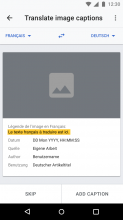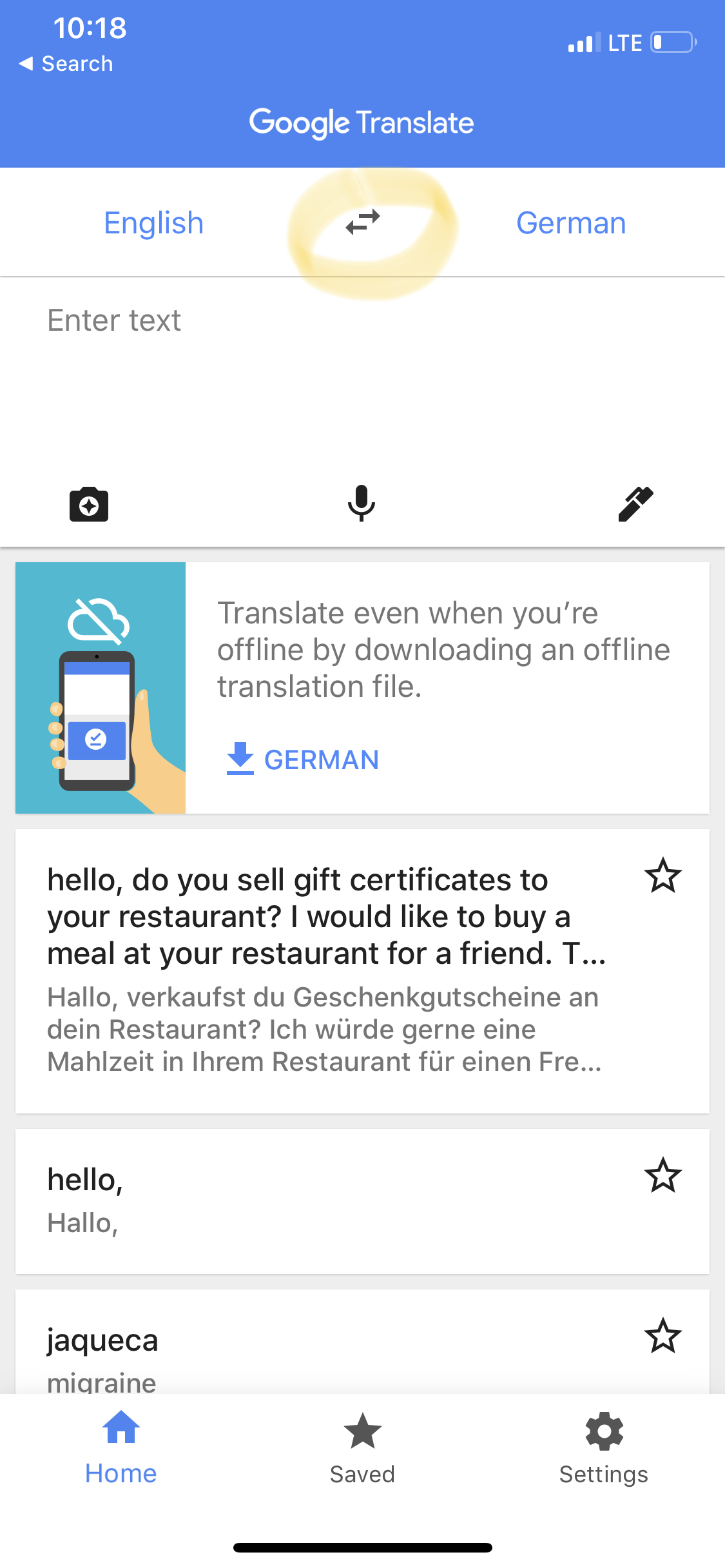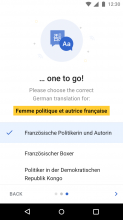Assessment to ensure that users can translate into/out of their app languages
As a multilingual Wikipedia user, when I have proven myself as an editor of good standing in my primary language but not in other languages I speak, I want to translate title descriptions or image captions to other languages I speak, so that I can grow my contributions to Wikipedia.
Flow (Interactive flow chart | Download flow chart)
- Users either change the “From“ or “To“ language, as described in user story 1.
- On language change, a dialog appears that informs users about their first time translation attempt into the chosen language.
- Taping “Later“ resets the initial language selection.
- “Let’s go“ leads users to a language assessment that consists of three multiple choice questions. The exact questions have to be defined yet.
- a) If 3/3 questions have been answered correctly, the test has been completed successfully. Users are taken to the “Success“ view. A tap on “Get started“ takes them back to the Translate title description view. There, a new translation card based on the users language selection is presented.
- b) If the test hasn’t been completed successfully (1 or more errors), users are taken to the “Failed“ view. They can either tap “Skip“ to get back to the Translate title descriptions view or “Try again“ to take the test again. Infinite approaches are allowed.
- Tapping the language switch via bidirectional arrow icon in the main view also triggers the assessment dialog.
